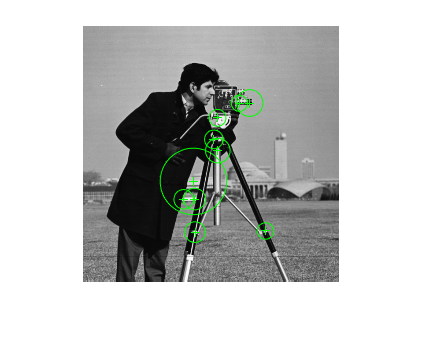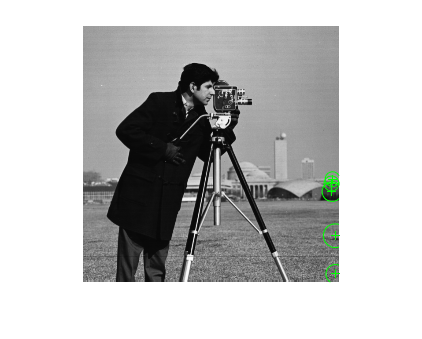SIFTPoints
Description
The SIFTPoints object enables you to pass data between the
detectSIFTFeatures and extractFeatures functions. You can also use it to manipulate and plot the data
returned by these functions. You can use the object to fill interest points
interactively.
Creation
Description
Input Arguments
Properties
Object Functions
plot | Plot points |
isempty | Determine if points object is empty |
length | Number of stored points |
selectStrongest | Select points with strongest metrics |
size | Return size of points object |
selectUniform | Select uniformly distributed subset of point features |
select | Select point or region features during code generation |
Examples
Tips
Although
SIFTPointsmay hold many points, it is a scalar object. Therefore,numel(SIFTPoints) always returns1. This value may differ fromlength(SIFTPoints), which returns the true number of points held by the object.Properties can be specified as a scalar or a vector whose length matches the number of coordinates in
location.
References
[1] Lowe, David G.. "Distinctive Image Features from Scale-Invariant Keypoints." Int. J. Comput. Vision 60 , no. 2 (2004): 91--110.
Extended Capabilities
Version History
Introduced in R2021b

